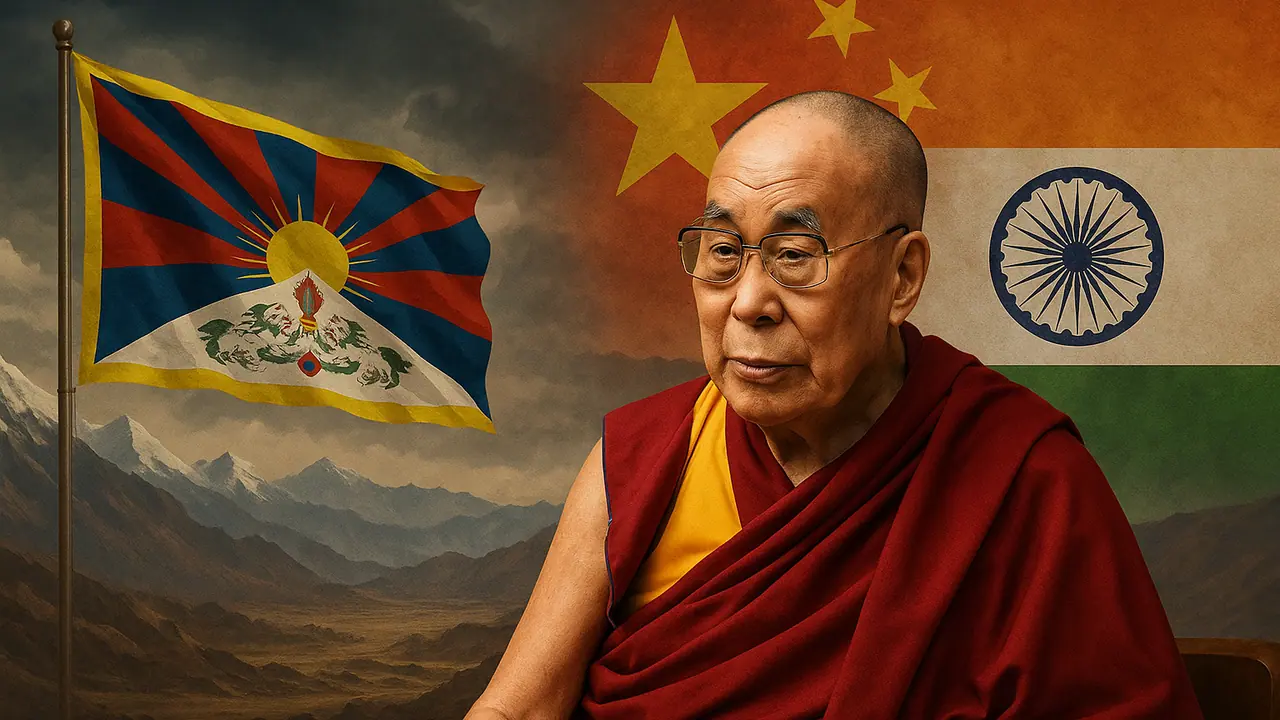The Dalai Lama confirms his spiritual lineage will continue after his death, defying China’s control and reassuring Tibetans worldwide.
As the 14th Dalai Lama prepares to celebrate his 90th birthday this July, a moment of clarity — and comfort — has emerged from the misty hills of Dharamsala. In a statement that many Tibetan Buddhists had long hoped for, the spiritual leader announced that the 600-year-old institution of the Dalai Lama will continue after his death.

This assurance comes amid mounting anxiety about the future of Tibetan Buddhism and increasing Chinese efforts to control the reincarnation process of one of the world’s most revered spiritual figures.
Dalai Lama: A Message to the Faithful
"In accordance with all these requests, I am affirming that the institution of the Dalai Lama will continue," said the Dalai Lama during a video broadcast at a gathering of religious leaders in his long-time home of Dharamsala.
Wearing his maroon robes and speaking with his characteristic warmth, the Dalai Lama said his office had received repeated appeals over the past 14 years.
“I have received multiple appeals… from the Tibetan diaspora, Buddhists from across the Himalayan region, Mongolia and parts of Russia and China, earnestly requesting that the institution of the Dalai Lama continue,” he said. “In particular, I have received messages through various channels from Tibetans in Tibet making the same appeal.”
The video message marks a turning point. Until now, the Dalai Lama had said the role would continue only if there was a popular demand. Now, with voices rising from across borders and generations, he has made it official.
“Exclusively Ours”: Succession Without China
Beijing’s attempts to control the reincarnation of Tibetan leaders are no secret. In 1995, the Chinese government named its own Panchen Lama — and detained the Dalai Lama’s recognised candidate, a six-year-old child who, to this day, has never been seen in public. Human rights groups still describe him as the world’s youngest political prisoner.
Now, as speculation swirls around who might succeed the current Dalai Lama, the Nobel Peace Prize winner was unambiguous.
“The responsibility for identifying the 15th Dalai Lama will rest exclusively with the Gaden Phodrang Trust,” he declared.
The Trust, headquartered in India, represents the Dalai Lama’s personal office. Senior Tibetan leader Samdhong Rinpoche, speaking to reporters, added that “the Dalai Lama was in excellent health” and that “at this time, there were no further instructions for succession.” However, he hinted that the next Dalai Lama could be of “any nationality,” and would come from a place where there is “access to freedom”.
China Insists on “Golden Urn” Ritual
Unsurprisingly, China was quick to respond.
“The reincarnation of the Dalai Lama must be approved by the central government,” said foreign ministry spokesperson Mao Ning. The process, she insisted, would follow the “golden urn” tradition — a lottery-like draw from a ceremonial urn controlled by Beijing.
But the Dalai Lama has long rejected this process. “When used dishonestly,” he warned, the golden urn lacks “any spiritual quality.”
This struggle — between spiritual legitimacy and political muscle — lies at the heart of a complex and painful story. For many Tibetans, this is not just about succession; it's about preserving an identity that has endured despite invasion, exile and decades of cultural suppression.
Dalai Lama: A Life Lived in Exile
Born as Lhamo Dhondup in a farming village in 1935, the Dalai Lama was identified at age two as the reincarnation of his predecessor. He was enthroned as Tibet’s leader at just 15, following China’s invasion of the region in 1950.
When Chinese troops crushed a Tibetan uprising in 1959, the Dalai Lama fled Lhasa. His escape across the Himalayas took 13 harrowing days. He has never returned.
India welcomed him and thousands of Tibetan refugees, offering them sanctuary in Dharamsala. There, he established the Tibetan government-in-exile and shifted the global discourse on Tibet from political independence to “greater autonomy” — a stance known as the Middle Way Approach.
His charm, humility and humour — once saying he would like to reincarnate as an “attractive blonde” — made him a global icon. Despite Beijing branding him a “separatist” and “wolf in monk’s robes,” he was awarded the Nobel Peace Prize in 1989 for his non-violent struggle and message of reconciliation.
A Leader Beyond Borders
Now, as his 90th birthday approaches, the Dalai Lama remains a spiritual anchor for millions.
His successor may not wear the same face, speak the same language, or even hail from the same nation. But his message is timeless.
"No recognition or acceptance should be given to a candidate chosen for political ends by anyone, including those in the People's Republic of China," he has insisted.
The affirmation of the Dalai Lama’s spiritual lineage is more than religious symbolism. It is an act of resistance — against authoritarian control, against cultural erasure, and for the unbroken spirit of a people who have, time and again, turned exile into a kind of freedom.
The Fight for Faith and Freedom
As Tibetan civil servant Jigme Taydeh put it: “Whilst we rejoice at this confirmation of its continuation, we stringently object to China's interference and plans to install a puppet Dalai Lama. Neither the Tibetans nor the world would recognise such mischief."
For now, the Dalai Lama remains a living thread between Tibet’s past and its uncertain future. But with his announcement, he has woven a strand of certainty into that future — one that neither Beijing’s urn nor its armies can erase.


